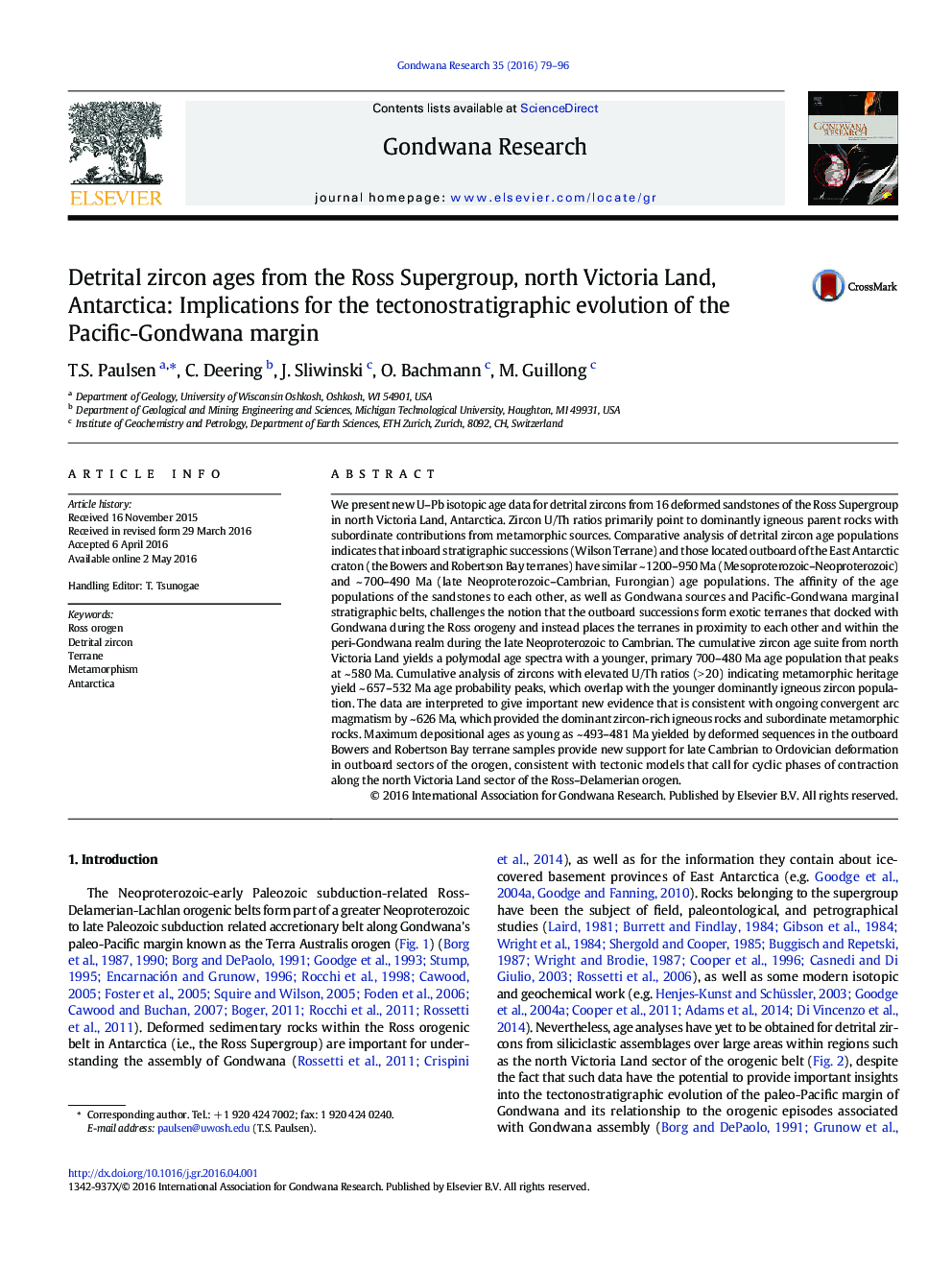| کد مقاله | کد نشریه | سال انتشار | مقاله انگلیسی | نسخه تمام متن |
|---|---|---|---|---|
| 4726589 | 1640136 | 2016 | 18 صفحه PDF | دانلود رایگان |
• Detrital zircon age populations are consistent with derivation from Gondwana.
• Data are consistent with ongoing Ross orogen magmatism and metamorphism by ~ 626 Ma.
• Results support tectonic models calling for polycyclic contraction along the margin.
We present new U–Pb isotopic age data for detrital zircons from 16 deformed sandstones of the Ross Supergroup in north Victoria Land, Antarctica. Zircon U/Th ratios primarily point to dominantly igneous parent rocks with subordinate contributions from metamorphic sources. Comparative analysis of detrital zircon age populations indicates that inboard stratigraphic successions (Wilson Terrane) and those located outboard of the East Antarctic craton (the Bowers and Robertson Bay terranes) have similar ~ 1200–950 Ma (Mesoproterozoic–Neoproterozoic) and ~ 700–490 Ma (late Neoproterozoic–Cambrian, Furongian) age populations. The affinity of the age populations of the sandstones to each other, as well as Gondwana sources and Pacific-Gondwana marginal stratigraphic belts, challenges the notion that the outboard successions form exotic terranes that docked with Gondwana during the Ross orogeny and instead places the terranes in proximity to each other and within the peri-Gondwana realm during the late Neoproterozoic to Cambrian. The cumulative zircon age suite from north Victoria Land yields a polymodal age spectra with a younger, primary 700–480 Ma age population that peaks at ~ 580 Ma. Cumulative analysis of zircons with elevated U/Th ratios (> 20) indicating metamorphic heritage yield ~ 657–532 Ma age probability peaks, which overlap with the younger dominantly igneous zircon population. The data are interpreted to give important new evidence that is consistent with ongoing convergent arc magmatism by ~ 626 Ma, which provided the dominant zircon-rich igneous rocks and subordinate metamorphic rocks. Maximum depositional ages as young as ~ 493–481 Ma yielded by deformed sequences in the outboard Bowers and Robertson Bay terrane samples provide new support for late Cambrian to Ordovician deformation in outboard sectors of the orogen, consistent with tectonic models that call for cyclic phases of contraction along the north Victoria Land sector of the Ross–Delamerian orogen.
Figure optionsDownload as PowerPoint slide
Journal: Gondwana Research - Volume 35, July 2016, Pages 79–96
